The anchor of The O'Reilly Factor recounts one of the most
dramatic stories in American history—how one gunshot changed the country
forever. In the spring of 1865, the bloody saga of America's Civil War
finally comes to an end after a series of increasingly harrowing
battles. President Abraham Lincoln's generous terms for Robert E. Lee's
surrender are devised to fulfill Lincoln's dream of healing a divided
nation, with the former Confederates allowed to reintegrate into
American society. But one man and his band of murderous accomplices,
perhaps reaching into the highest ranks of the U.S. government, are not
appeased.
In the midst of the patriotic celebrations in Washington D.C., John Wilkes Booth—charismatic ladies' man and impenitent racist—murders Abraham Lincoln at Ford's Theatre. A furious manhunt ensues and Booth immediately becomes the country's most wanted fugitive. Lafayette C. Baker, a smart but shifty New York detective and former Union spy, unravels the string of clues leading to Booth, while federal forces track his accomplices. The thrilling chase ends in a fiery shootout and a series of court-ordered executions—including that of the first woman ever executed by the U.S. government, Mary Surratt. Featuring some of history's most remarkable figures, vivid detail, and page-turning action, Killing Lincoln is history that reads like a thriller.
Lincoln’s Last Days is a gripping account of one of the most dramatic nights in American history—of how one gunshot changed the country forever. Adapted from Bill O’Reilly’s bestselling historical thriller, Killing Lincoln, this book will have young readers—and grown-ups too—hooked on history.
In the spring of 1865, President Abraham Lincoln travels through Washington, D.C., after finally winning America’s bloody Civil War. In the midst of celebrations, Lincoln is assassinated at Ford’s Theatre by a famous actor named John Wilkes Booth. What follows is a thrilling chase, ending with a fiery shoot-out and swift justice for the perpetrators.
With an unforgettable cast of characters, page-turning action, vivid detail, and art on every spread, Lincoln’s Last Days is history that reads like a thriller.
More than a million readers have thrilled to Bill O'Reilly's Killing Lincoln, the page-turning work of nonfiction about the shocking assassination that changed the course of American history. Now the anchor of The O'Reilly Factor recounts in gripping detail the brutal murder of John Fitzgerald Kennedy—and how a sequence of gunshots on a Dallas afternoon not only killed a beloved president but also sent the nation into the cataclysmic division of the Vietnam War and its culture-changing aftermath.
In January 1961, as the Cold War escalates, John F. Kennedy struggles to contain the growth of Communism while he learns the hardships, solitude, and temptations of what it means to be president of the United States. Along the way he acquires a number of formidable enemies, among them Soviet leader Nikita Khrushchev, Cuban dictator Fidel Castro, and Alan Dulles, director of the Central Intelligence Agency. In addition, powerful elements of organized crime have begun to talk about targeting the president and his brother, Attorney General Robert Kennedy.
In the midst of a 1963 campaign trip to Texas, Kennedy is gunned down by an erratic young drifter named Lee Harvey Oswald. The former Marine Corps sharpshooter escapes the scene, only to be caught and shot dead while in police custody.
The events leading up to the most notorious crime of the twentieth century are almost as shocking as the assassination itself. Killing Kennedy chronicles both the heroism and deceit of Camelot, bringing history to life in ways that will profoundly move the reader. This may well be the most talked about book of the year.
Early in 1495, Leonardo da Vinci began work in Milan on what would become one of history's most influential and beloved works of art-The Last Supper. After a dozen years at the court of Lodovico Sforza, the Duke of Milan, Leonardo was at a low point personally and professionally: at forty-three, in an era when he had almost reached the average life expectancy, he had failed, despite a number of prestigious commissions, to complete anything that truly fulfilled his astonishing promise. His latest failure was a giant bronze horse to honor Sforza's father: His 75 tons of bronze had been expropriated to be turned into cannons to help repel a French invasion of Italy. The commission to paint The Last Supper in the refectory of a Dominican convent was a small compensation, and his odds of completing it were not promising: Not only had he never worked on a painting of such a large size-15' high x 30' wide-but he had no experience in the extremely difficult medium of fresco.
In his compelling new book, Ross King explores how-amid war and the political and religious turmoil around him, and beset by his own insecurities and frustrations-Leonardo created the masterpiece that would forever define him. King unveils dozens of stories that are embedded in the painting. Examining who served as the models for the Apostles, he makes a unique claim: that Leonardo modeled two of them on himself. Reviewing Leonardo's religious beliefs, King paints a much more complex picture than the received wisdom that he was a heretic. The food that Leonardo, a famous vegetarian, placed on the table reveals as much as do the numerous hand gestures of those at Christ's banquet. As King explains, many of the myths that have grown up around The Last Supper are wrong, but its true story is ever more interesting. Bringing to life a fascinating period in European history, Ross King presents an original portrait of one of the world's greatest geniuses through the lens of his most famous work.
Thirty years after the Civil War's Battle of the Wilderness left him maimed, Abel Truman has found his way to the edge of the continent, the rugged, majestic coast of Washington State, where he lives alone in a driftwood shack with his beloved dog. Wilderness is the story of Abel, now an old and ailing man, and his heroic final journey over the snowbound Olympic Mountains. It's a quest he has little hope of completing but still must undertake to settle matters of the heart that predate even the horrors of the war.As Abel makes his way into the foothills, the violence he endures at the hands of two thugs who are after his dog is crosscut with his memories of the horrors of the war, the friends he lost, and the savagery he took part in and witnessed. And yet, darkness is cut by light, especially in the people who have touched his life-from Jane Dao-Ming Poole, the daughter of murdered Chinese immigrants, to Hypatia, an escaped slave who nursed him back to life, and finally to the unbearable memory of the wife and child he lost as a young man. Haunted by tragedy, loss, and unspeakable brutality, Abel has somehow managed to hold on to his humanity, finding way stations of kindness along his tortured and ultimately redemptive path.In its contrasts of light and dark, wild and tame, brutal and tender, and its attempts to reconcile a horrific war with the great evil it ended, Wilderness tells not only the moving tale of an unforgettable character, but a story about who we are as human beings, a people, and a nation. Lance Weller's immensely impressive debut immediately places him among our most talented writers.
Orphaned after the death of her mother, eighteen-year-old Esther Chambers heads west in search of her only living relative. In the lawless frontier town of Century, Oregon, she’s met by her distant cousin, a laconic cattle rancher named Ferris Pickett. Pick leads her to a tiny cabin by a small lake called Half-a-Mind, and there she begins her new life as a homesteader. If she can hold out for five years, the land will join Pick’s already impressive spread.
But Esther discovers that this town on the edge of civilization is in the midst of a range war. There’s plenty of land, but somehow it is not enough for the ranchers—it’s cattle against sheep, with water at a premium. In this charged climate, small incidents of violence swiftly escalate, and Esther finds her sympathies divided between her cousin and a sheepherder named Ben Cruff, a sworn enemy of the cattle ranchers. As her feelings for Ben and for her land grow, she begins to see she can’t be loyal to both.
Little Century maps our country’s cutthroat legacy of dispossession and greed, even as it celebrates the ecstatic visions of what America could become.
In the midst of the patriotic celebrations in Washington D.C., John Wilkes Booth—charismatic ladies' man and impenitent racist—murders Abraham Lincoln at Ford's Theatre. A furious manhunt ensues and Booth immediately becomes the country's most wanted fugitive. Lafayette C. Baker, a smart but shifty New York detective and former Union spy, unravels the string of clues leading to Booth, while federal forces track his accomplices. The thrilling chase ends in a fiery shootout and a series of court-ordered executions—including that of the first woman ever executed by the U.S. government, Mary Surratt. Featuring some of history's most remarkable figures, vivid detail, and page-turning action, Killing Lincoln is history that reads like a thriller.
Lincoln’s Last Days is a gripping account of one of the most dramatic nights in American history—of how one gunshot changed the country forever. Adapted from Bill O’Reilly’s bestselling historical thriller, Killing Lincoln, this book will have young readers—and grown-ups too—hooked on history.
In the spring of 1865, President Abraham Lincoln travels through Washington, D.C., after finally winning America’s bloody Civil War. In the midst of celebrations, Lincoln is assassinated at Ford’s Theatre by a famous actor named John Wilkes Booth. What follows is a thrilling chase, ending with a fiery shoot-out and swift justice for the perpetrators.
With an unforgettable cast of characters, page-turning action, vivid detail, and art on every spread, Lincoln’s Last Days is history that reads like a thriller.
More than a million readers have thrilled to Bill O'Reilly's Killing Lincoln, the page-turning work of nonfiction about the shocking assassination that changed the course of American history. Now the anchor of The O'Reilly Factor recounts in gripping detail the brutal murder of John Fitzgerald Kennedy—and how a sequence of gunshots on a Dallas afternoon not only killed a beloved president but also sent the nation into the cataclysmic division of the Vietnam War and its culture-changing aftermath.
In January 1961, as the Cold War escalates, John F. Kennedy struggles to contain the growth of Communism while he learns the hardships, solitude, and temptations of what it means to be president of the United States. Along the way he acquires a number of formidable enemies, among them Soviet leader Nikita Khrushchev, Cuban dictator Fidel Castro, and Alan Dulles, director of the Central Intelligence Agency. In addition, powerful elements of organized crime have begun to talk about targeting the president and his brother, Attorney General Robert Kennedy.
In the midst of a 1963 campaign trip to Texas, Kennedy is gunned down by an erratic young drifter named Lee Harvey Oswald. The former Marine Corps sharpshooter escapes the scene, only to be caught and shot dead while in police custody.
The events leading up to the most notorious crime of the twentieth century are almost as shocking as the assassination itself. Killing Kennedy chronicles both the heroism and deceit of Camelot, bringing history to life in ways that will profoundly move the reader. This may well be the most talked about book of the year.
Early in 1495, Leonardo da Vinci began work in Milan on what would become one of history's most influential and beloved works of art-The Last Supper. After a dozen years at the court of Lodovico Sforza, the Duke of Milan, Leonardo was at a low point personally and professionally: at forty-three, in an era when he had almost reached the average life expectancy, he had failed, despite a number of prestigious commissions, to complete anything that truly fulfilled his astonishing promise. His latest failure was a giant bronze horse to honor Sforza's father: His 75 tons of bronze had been expropriated to be turned into cannons to help repel a French invasion of Italy. The commission to paint The Last Supper in the refectory of a Dominican convent was a small compensation, and his odds of completing it were not promising: Not only had he never worked on a painting of such a large size-15' high x 30' wide-but he had no experience in the extremely difficult medium of fresco.
In his compelling new book, Ross King explores how-amid war and the political and religious turmoil around him, and beset by his own insecurities and frustrations-Leonardo created the masterpiece that would forever define him. King unveils dozens of stories that are embedded in the painting. Examining who served as the models for the Apostles, he makes a unique claim: that Leonardo modeled two of them on himself. Reviewing Leonardo's religious beliefs, King paints a much more complex picture than the received wisdom that he was a heretic. The food that Leonardo, a famous vegetarian, placed on the table reveals as much as do the numerous hand gestures of those at Christ's banquet. As King explains, many of the myths that have grown up around The Last Supper are wrong, but its true story is ever more interesting. Bringing to life a fascinating period in European history, Ross King presents an original portrait of one of the world's greatest geniuses through the lens of his most famous work.
Thirty years after the Civil War's Battle of the Wilderness left him maimed, Abel Truman has found his way to the edge of the continent, the rugged, majestic coast of Washington State, where he lives alone in a driftwood shack with his beloved dog. Wilderness is the story of Abel, now an old and ailing man, and his heroic final journey over the snowbound Olympic Mountains. It's a quest he has little hope of completing but still must undertake to settle matters of the heart that predate even the horrors of the war.As Abel makes his way into the foothills, the violence he endures at the hands of two thugs who are after his dog is crosscut with his memories of the horrors of the war, the friends he lost, and the savagery he took part in and witnessed. And yet, darkness is cut by light, especially in the people who have touched his life-from Jane Dao-Ming Poole, the daughter of murdered Chinese immigrants, to Hypatia, an escaped slave who nursed him back to life, and finally to the unbearable memory of the wife and child he lost as a young man. Haunted by tragedy, loss, and unspeakable brutality, Abel has somehow managed to hold on to his humanity, finding way stations of kindness along his tortured and ultimately redemptive path.In its contrasts of light and dark, wild and tame, brutal and tender, and its attempts to reconcile a horrific war with the great evil it ended, Wilderness tells not only the moving tale of an unforgettable character, but a story about who we are as human beings, a people, and a nation. Lance Weller's immensely impressive debut immediately places him among our most talented writers.
Orphaned after the death of her mother, eighteen-year-old Esther Chambers heads west in search of her only living relative. In the lawless frontier town of Century, Oregon, she’s met by her distant cousin, a laconic cattle rancher named Ferris Pickett. Pick leads her to a tiny cabin by a small lake called Half-a-Mind, and there she begins her new life as a homesteader. If she can hold out for five years, the land will join Pick’s already impressive spread.
But Esther discovers that this town on the edge of civilization is in the midst of a range war. There’s plenty of land, but somehow it is not enough for the ranchers—it’s cattle against sheep, with water at a premium. In this charged climate, small incidents of violence swiftly escalate, and Esther finds her sympathies divided between her cousin and a sheepherder named Ben Cruff, a sworn enemy of the cattle ranchers. As her feelings for Ben and for her land grow, she begins to see she can’t be loyal to both.
Little Century maps our country’s cutthroat legacy of dispossession and greed, even as it celebrates the ecstatic visions of what America could become.
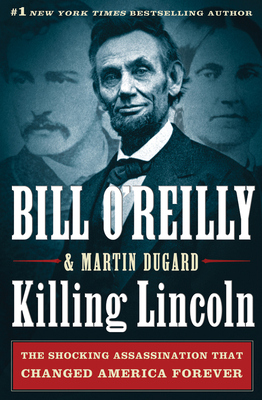

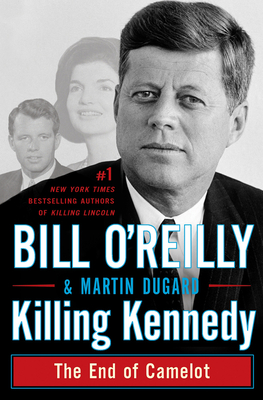
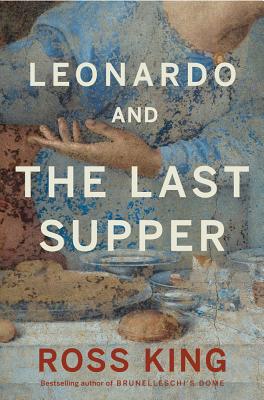
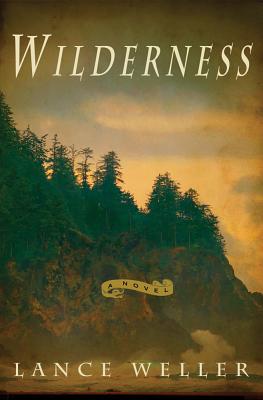
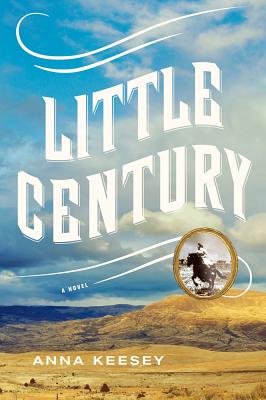
No comments:
Post a Comment